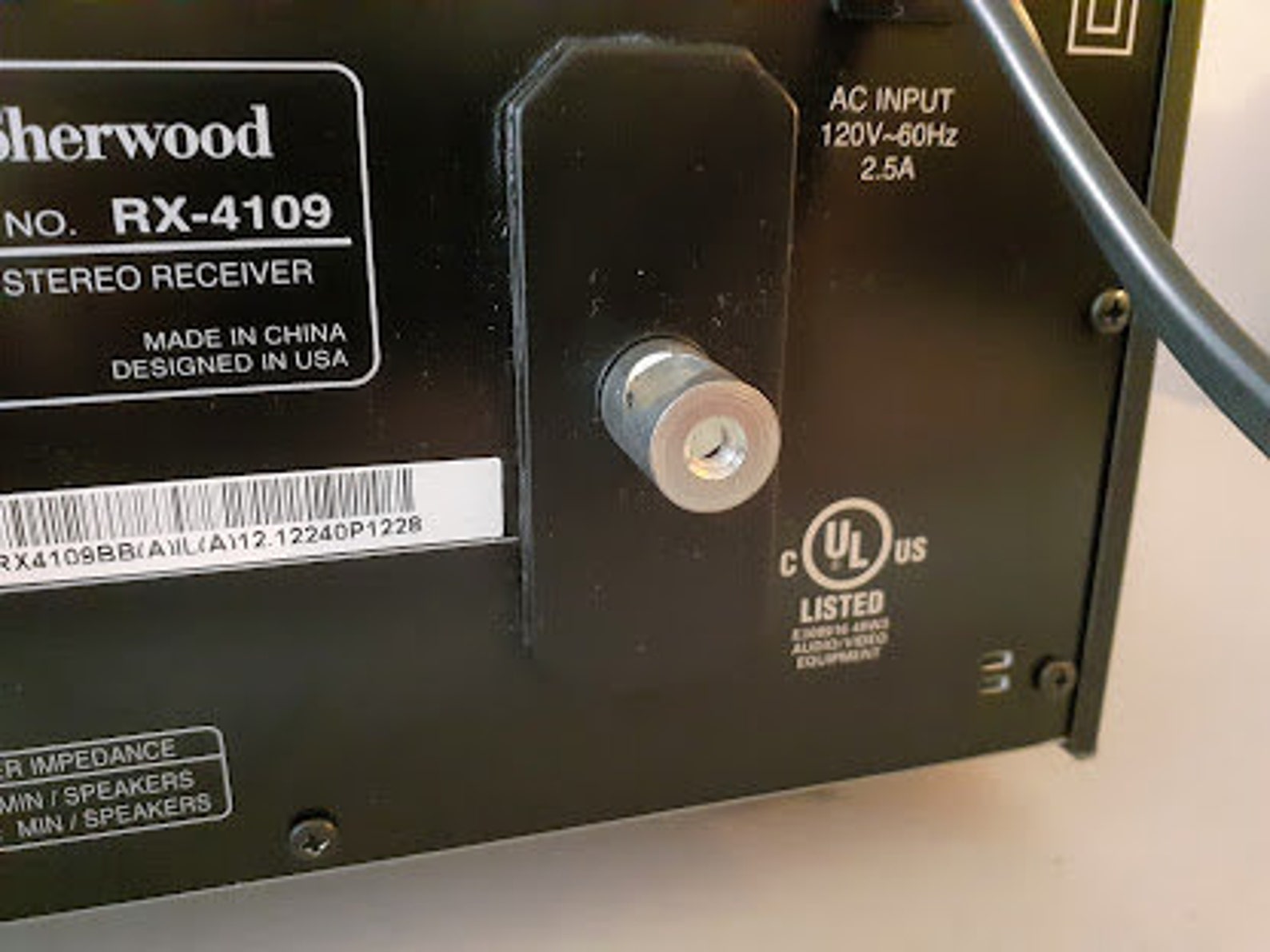
But all and all I am thoroughly impressed with the quality of this amp.

Already have a plan for a guitar amp FENDER Bullet 15 DSP from the local pawn shop. I am of course not turning the volume up past half way so, I think the possibility of burning up the amp is very small. I plugged in the guitar to the tape dubbing port, and works just fine as a temporary guitar amp. Recently Received a Squire Fender, with out a guitar amp. But since I use the one for my computer hookup, get all sound from the computer coming threw the stereo out to the speakers. I turn the Loudness knob counter clockwise and it will not power off, no click. Both seem to work, on the S7310A I noticed it does not have an power off. Well, I was given two of these Sherwood amplifiers. The overall sound is lush for a string quartet with enough punch to do justice to Metallica. The end result of my labors was a very sweet sounding unit that should last for another 20-30 years. The tuning capacitor was spritzed with Deoxit Gold. Pots and switches were cleaned with Blue Foam and Deoxit Gold. A total of 50 caps were replaced, the 6.8k main filters were left as is. The tone control circuit is not defeatable, so it better sound sweet when driven by the cd player not yet imagined in 1975.Īll other caps were replaced with Panasonic FCs with extra margin on the voltages. As luck would have it, my back order of Elna Silmic II caps had just arrived so the 8 4.7 mfd caps on this small board were replaced with silk. Changing the caps on this board requires peeling the face and unclamping the filter caps. These slightly obscure the treble/bass board that hides just behind the face of the unit. Note the two power supply filter caps in the upper right corner. But whither phono? The phono board is located underneath the unit, at the upper left in this photo. Immediately below it are the AM and FM boards that required removal of 4 screws and some tugging to restore. The tuning capacitor is at the upper left, shielded. The output boards are in the upper middle and are accessible from below. The power supply board is at the lower right, below the transformer. Here is the bird's eye view from the top: So, on with the restoration! The board layout is straight forward with only the treble/bass board presenting a significant challenge. The 7310 offers the David Hafler's Dynaquad circuitry, an island of sanity in this era of quad madness: This 7310 worked well on arrival. Cosmetically, Sherwood lags a bit behind Marantz, but a clean example represents '70s hifi style very well.

The receivers sound bigger than their advertised wattage and the tuners are solid all 'round performers. Sherwood build quality is not as impressive as Marantz, but manages a significant sonic mojo. I purchased a new 7210 in 1975, and remember it fondly. The 7310 is the middle of the line from about 1975 and boasts 38 real world, rms watts. In my young adulthood it was a brand that I could afford (via Illinois Audio: ahh, the days of discount mail order) and their receivers sounded good to my young ears. I have long regarded Sherwood gear as sleepers.


 0 kommentar(er)
0 kommentar(er)
